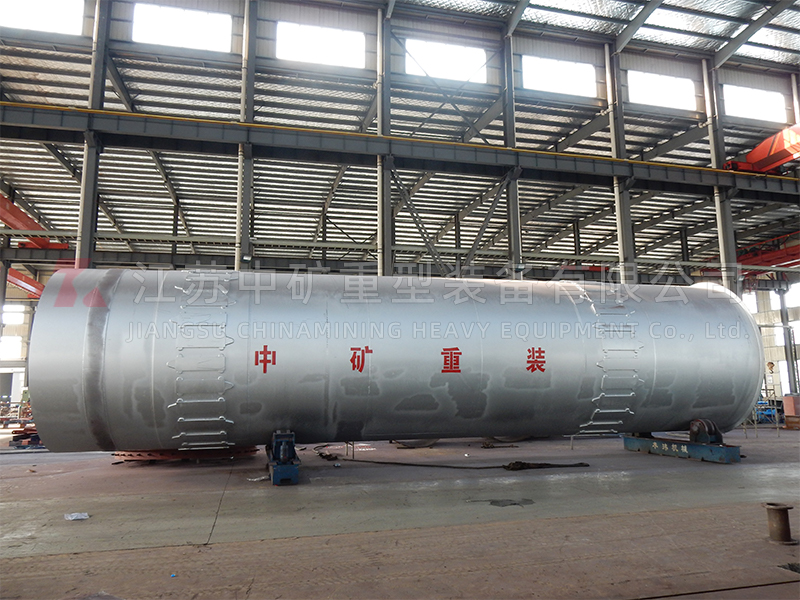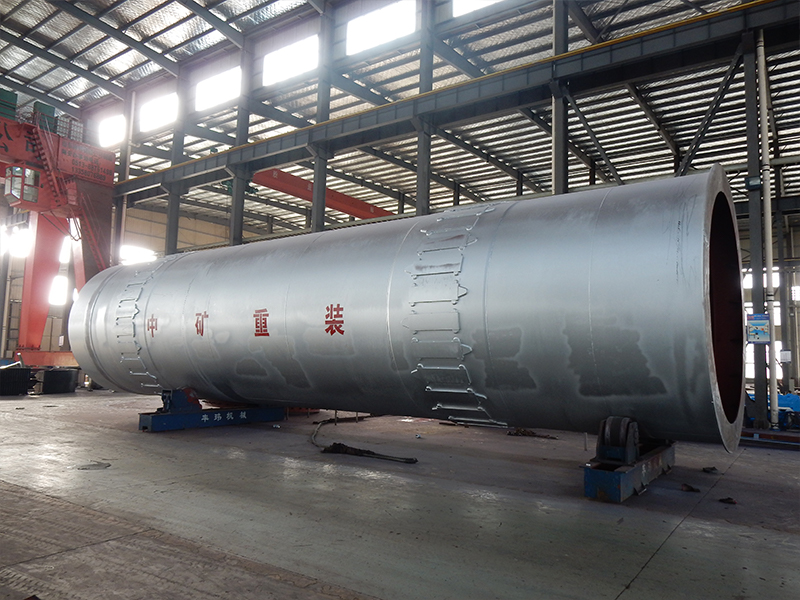The rotary kiln is the main equipment for calcining cement clinker. The rotary kiln produced by our company is used in chemical industry, metallurgy and other industries. The rotary kiln calcining system equipment adopts domestic and foreign advanced technologies such as hydraulic wheel block device, high-precision metering plunger pump, high-precision speed regulating valve and contact stone grinding block sealing device through technological innovation. In order to improve the degree of automation, the kiln head uses industrial TV to watch the fire, the process flow simulates the fluorescent screen, and the satin burning belt uses infrared scanner to directly reflect the satin burning situation of the satin burning belt on the computer. These new technologies are intuitive, easy to operate and reliable to use. The thermal system is stabilized and the equipment operation rate is improved. Compared with the equipment of the same specification, the operation rate is increased by 3-5%, the output is increased by 5~10%, and the heat consumption is reduced by 15%.
According to the different materials processed, the rotary kiln can be divided into cement rotary kiln, metallurgical chemical rotary kiln, lime rotary kiln and hazardous waste incineration rotary kiln.
Function of rotary kiln
1. Its technical performance and operation conditions largely determine the quality, output and cost of the company's products. The folk song "As long as the big kiln is running, there will be thousands and millions" is a vivid description of the importance of rotary kilns in production.
2. In the building materials industry, rotary kilns are used to calcine clay, limestone and dry slag in addition to cement clinker; in the production of refractory materials, rotary kilns are used to calcine raw materials to stabilize their size and increase their strength, and then process them into shape.
3. In the ore dressing process, rotary kilns are used to magnetize and roast lean iron ore to change the original weak magnetism of the ore into strong magnetism, which is conducive to magnetic separation.
4. In the chemical industry, rotary kilns are used to produce soda, calcine phosphate fertilizers, barium sulfide, etc. In the 1960s, LapPle and others invented a new process for producing phosphoric acid using rotary kilns. This method has the advantages of low energy consumption, low electricity consumption, no sulfuric acid, and the use of medium and low-grade phosphate ore.
5. The entire production process of cement can be summarized as "two grindings and one burning", where "one burning" is the process of burning the raw materials that have been ground and prepared into clinker under the high temperature of the rotary kiln. Therefore, the rotary kiln is the main machine in cement production, commonly known as the "heart" of the cement plant.
6. In terms of environmental protection, developed countries in the world have used cement kilns to incinerate hazardous waste and garbage for more than 20 years, which not only reduces the amount of waste and makes it harmless, but also uses waste as fuel, saves coal powder, and achieves waste resource utilization.
Cement rotary kiln
Cement rotary kiln belongs to the category of building materials equipment and is a type of lime kiln. It is mainly used to calcine cement clinker. It is divided into two categories: dry process cement kiln and wet process cement kiln. Cement rotary kiln is the main equipment of cement clinker dry process and wet process production line.
Hazardous waste incineration rotary kiln
Hazardous waste incineration rotary kiln, also known as garbage incineration kiln, is an environmental protection equipment that treats hazardous waste such as industrial waste, medical waste, and domestic waste by incineration.
Hazardous waste incineration rotary kiln includes several parts such as feed cover, sealing device, cylinder part, transmission device, support device, and discharge cover. The cylinder of the kiln is rolled from steel plate, and refractory material is inlaid in the cylinder, and the inclination with the horizontal line is supported by two wheel belts on the 2-speed support device. A large gear ring is fixed on the inner cylinder of the wheel belt attachment at the feeding end with a tangential spring plate, and a small gear is meshed with it below.
When the hazardous waste incineration rotary kiln is operating normally, the main drive motor transmits power to the open gear device through the main reducer to drive the incineration kiln. The whole furnace body rotates to make the garbage evenly mixed and move along the inclination angle to the inclined end in a tumbling state. In order to achieve garbage incineration, a secondary combustion chamber is generally provided. Its structure enables the process of garbage drying, volatile analysis, garbage ignition and burning out to be completed in several heat transfer forms, and incineration is achieved in the secondary combustion chamber. The rotary kiln incinerator has strong adaptability to changes in incineration materials, especially for special garbage with high moisture content.
Various hazardous wastes are usually lifted from the storage pit to the feed hopper by a grab crane, and then pushed from the kiln head into the kiln by a push rod for combustion and decomposition. Due to the inclination and slow rotation of the cylinder, the waste is constantly turned, heated, dried, burned and gasified in the kiln. The unburned waste cracking gas in the rotary kiln and the toxic gases such as dioxins produced during the kiln incineration process enter the secondary combustion chamber for high-temperature combustion again. The flue gas after secondary combustion is sent to the flue gas treatment process for further treatment. The slag produced by the rotary kiln and the secondary combustion chamber is scraped out by the slag discharger at the bottom of the discharge hood or the bottom of the secondary combustion chamber and sent to the stabilization/solidification process for further treatment.


